Part historical account, part tribute to fine craftsmanship, Joanna Hardy’s colorful volume is a worthy celebration of the regal ruby.
The strength of the comprehensive survey of the fiery gemstone that is Ruby: The King of Gems lies in the author’s extraordinary ability to bring out gemological insights, historical anecdotes and a genuine jewelry lover’s vision in her narrative.
Jewelry expert Joanna Hardy takes readers on multiple journeys in this lavishly illustrated, superbly curated and authoritatively written overview of the gemstone associated with power and passion. The tale that encompasses how the ruby came to be appreciated in different cultures around the world to the craftsmanship behind some of high jewelry houses’ finest creations is as fascinating as it is filled with riches.
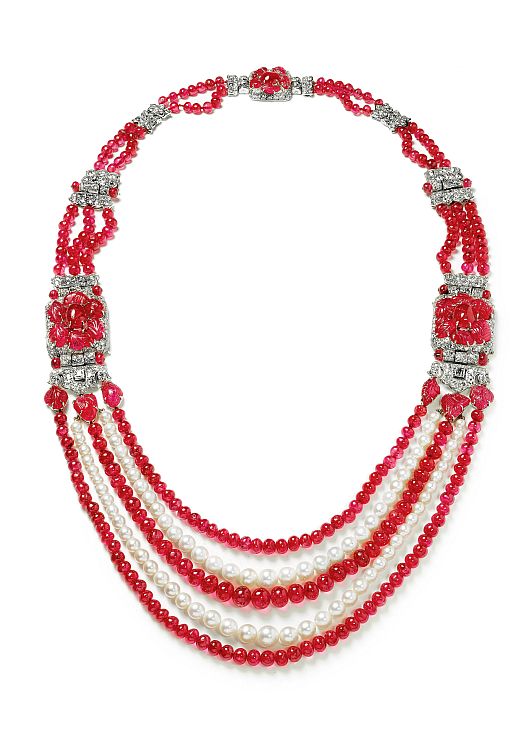
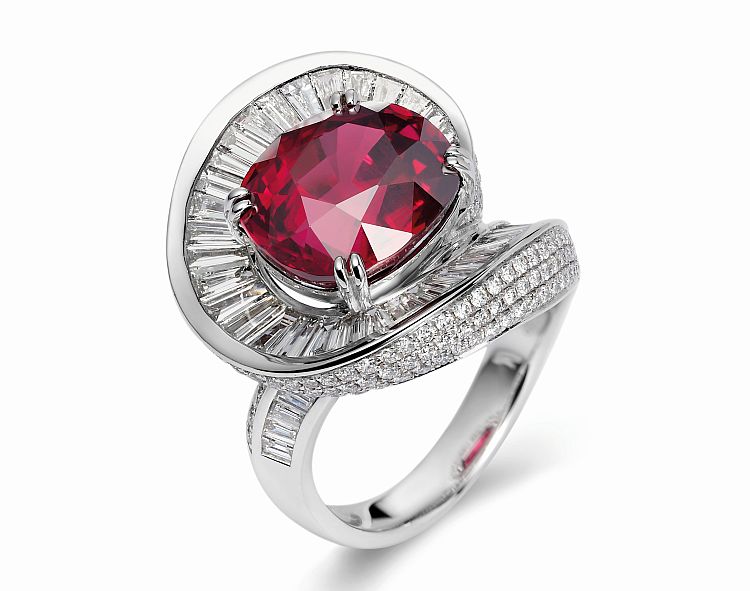
Ruby look-alikes
First, she sets the record straight on how spinel has been mistaken for ruby in many well-documented instances, notably in the British Imperial State Crown made by royal jewelers Garrard & Co. in 1937. In addition to 2,868 diamonds, the crown is set with the Black Prince’s Ruby, now known to be a 170-carat spinel.
“Rubies owe their initial fame to a fabulous gemstone called the spinel: if it were not for this beautiful gem, rubies may not have enjoyed their later worldwide recognition. Many of the world’s most famous ‘rubies’ are in fact spinels, a splendid and magnificent gemstone in its own right. This historical, predominantly Western, confusion between spinel and ruby is understandable given the great similarities in their appearance; indeed it was not until the late eighteenth century, when gemstones were classified mineralogically with the help of chemistry, that spinel was recognized as a mineral distinct from ruby,” explains Hardy in her introduction to the role of the spinel in ancient cultures, especially in the Mughal empire.
Following this introduction on the other mesmerizing red gemstone, Hardy goes on to give geographical and historical context to the production of the ruby, the center of which is in Burma. She then unravels some of the most striking uses of ruby in jaw-dropping jewelry creations by designers ranging from Wallace Chan to Andrew Grima and Salvador Dali.
What makes Ruby so interesting is its celebration of craftsmanship and jewelry-making. Before they were iconic jewels on the neck, ears or wrists of Elizabeth Taylor, Marlene Dietrich and Maria Callas, the stunners that were commissioned or received as tokens of love were lovingly crafted at fine-jewelry houses — and creative credit is given where it’s due.
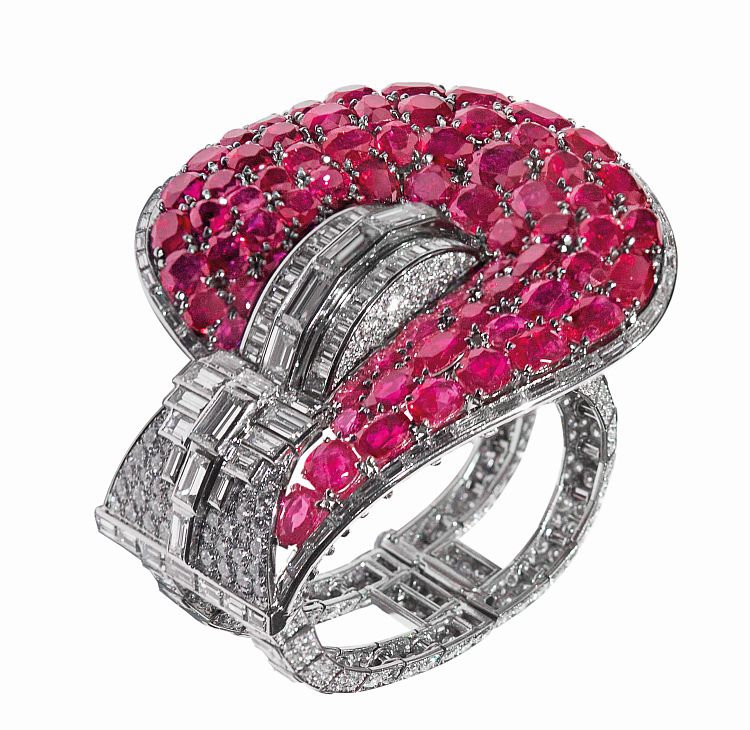
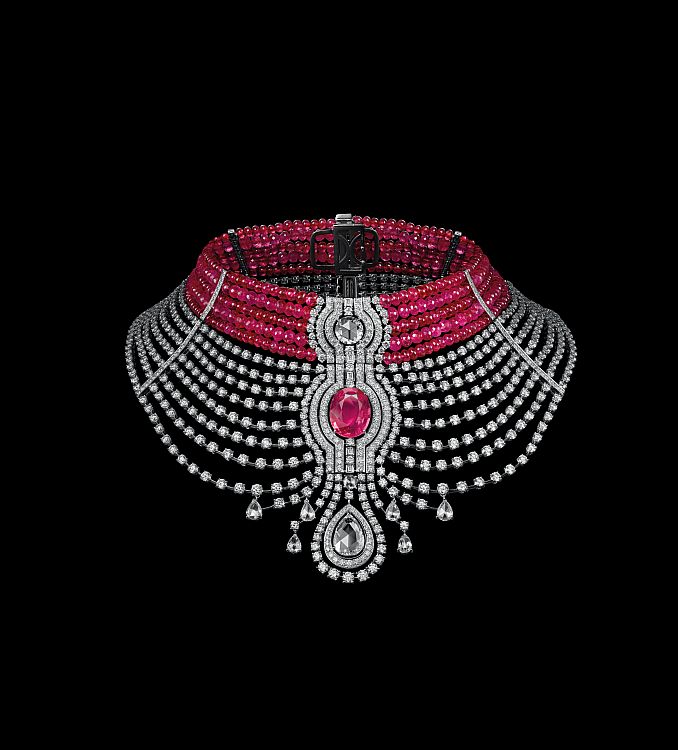
In full color
Imagery is key to such an ambitious undertaking. Alongside the more predictable photographs of breathtaking jewelry from the likes of Van Cleef & Arpels, Cartier and Bulgari and portraits of glamorous movie stars and royals, the book captivates by including full-bleed images of the gemstones.
“These vastly enlarged images of inclusions in stones from the world’s great ruby mines in Burma, Mozambique, Thailand, Tanzania and even Greenland serve to confirm the infinite variety of ruby’s great enigma,” writes Hardy.
Thanks to this indispensable coffee-table book fit for any jewelry enthusiast’s home the gemstone has become less enigmatic, but all the more enthralling.
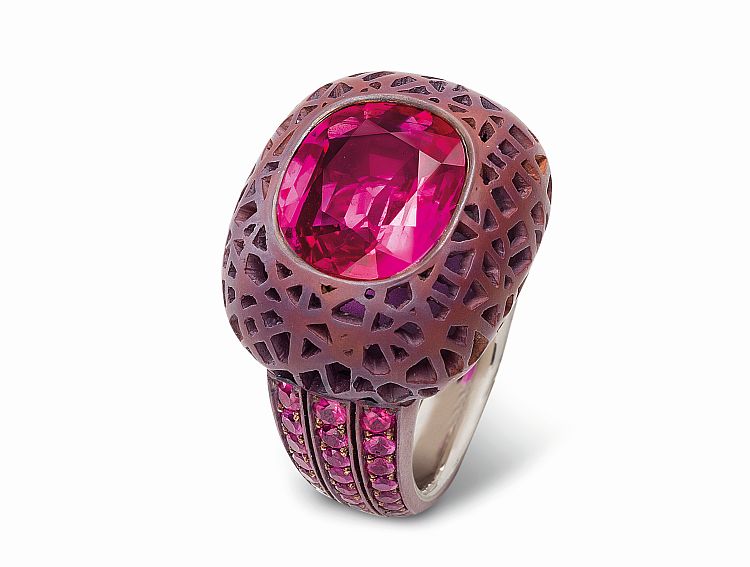
 Ruby: The King of gems: The book is published by Thames & Hudson and sponsored by Gemfields. Author Joanna Hardy is a fine-jewelry specialist with more than 30 years of experience in the trade, having worked for De Beers as a rough-diamond grader and valuer and Sotheby’s as a senior specialist and auctioneer. She is a fellow of the Royal Society of Arts and a regular jewelry expert on the BBC’s Antiques Roadshow. Hardy is also the author of Emerald: Twenty-one Centuries of Jewelled Opulence and Power.
Ruby: The King of gems: The book is published by Thames & Hudson and sponsored by Gemfields. Author Joanna Hardy is a fine-jewelry specialist with more than 30 years of experience in the trade, having worked for De Beers as a rough-diamond grader and valuer and Sotheby’s as a senior specialist and auctioneer. She is a fellow of the Royal Society of Arts and a regular jewelry expert on the BBC’s Antiques Roadshow. Hardy is also the author of Emerald: Twenty-one Centuries of Jewelled Opulence and Power.
Main image: Bulgari choker, 1979. Choker with oval medallions of concentric cabochon rubies, brilliant-cut diamonds and lapis lazuli, joined by gold chains and smaller sapphire cabochons.

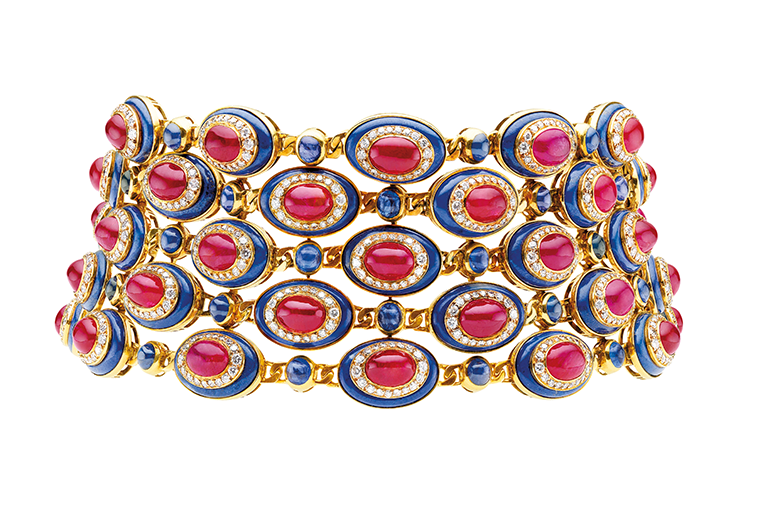
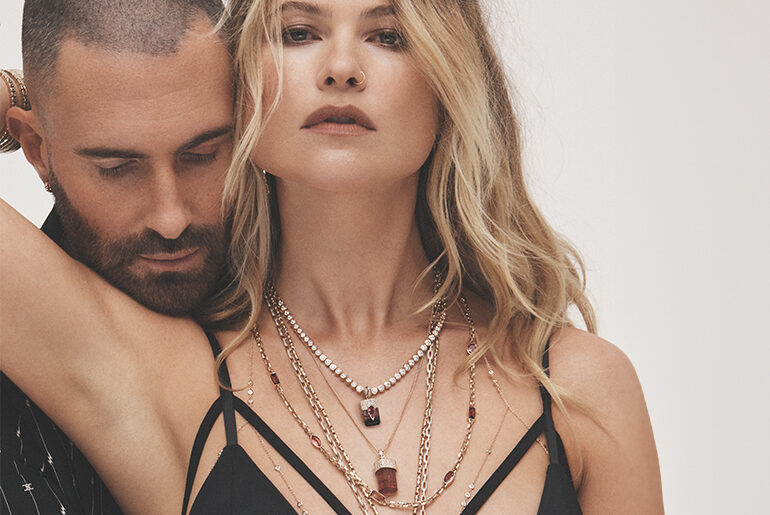
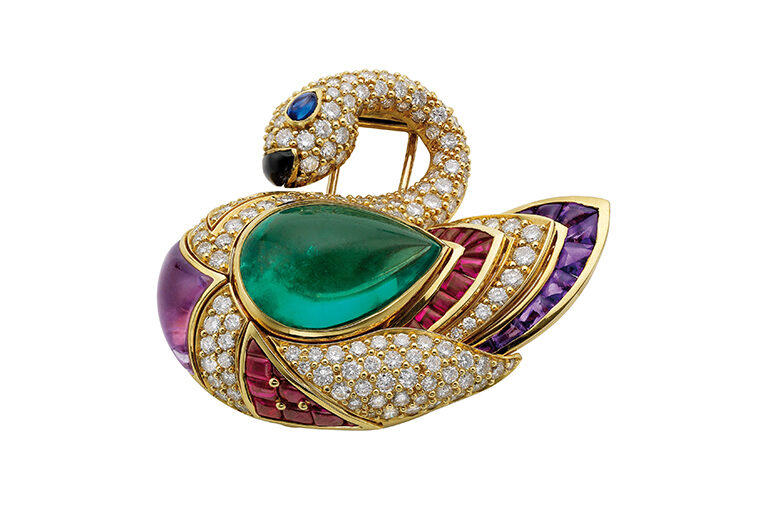
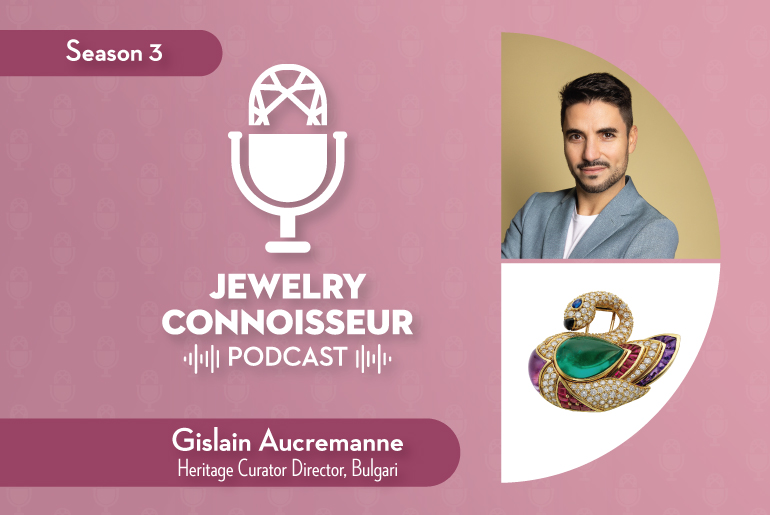
Comments are closed.